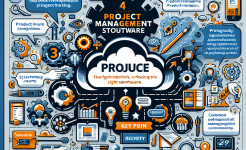The Product Development Core Team (PDCP) plays a pivotal and multi - faceted role within the Integrated Product Development (IPD) process. IPD is a comprehensive approach that aims to streamline product development, enhance cross - functional collaboration, and ultimately bring products to market more efficiently and effectively. At the heart of this process is the PDCP, which serves as the central decision - making body for product development initiatives.
The PDCP is responsible for overseeing the entire product development lifecycle, from the initial concept generation to the final product launch and even post - launch support. It brings together representatives from various functions such as marketing, engineering, manufacturing, finance, and procurement. This cross - functional composition ensures that all aspects of product development are considered holistically. By having diverse perspectives at the table, the PDCP can make informed decisions that balance market needs, technical feasibility, cost constraints, and manufacturing capabilities.
In essence, the PDCP acts as the driver of the product development train. It sets the direction, allocates resources, and monitors progress. Without an effective PDCP, product development efforts can easily become fragmented, leading to delays, cost overruns, and products that do not meet market expectations.
Strategic Guidance and Vision Setting
One of the primary responsibilities of the PDCP is to provide strategic guidance for product development. This involves aligning product development efforts with the overall business strategy of the company. The PDCP must understand the company's long - term goals, market positioning, and competitive landscape to define the right product portfolio.
The PDCP is tasked with identifying market opportunities and translating them into product concepts. It conducts market research, analyzes trends, and evaluates customer needs. Based on this information, it formulates product strategies that outline the features, functionality, and target market for each product. For example, if a company aims to expand its presence in the high - end consumer electronics market, the PDCP will guide the development of products with advanced features and premium design to meet the demands of this segment.
Moreover, the PDCP is responsible for setting the vision for each product. This vision serves as a guiding light for the entire product development team. It communicates the desired end - state of the product, including its unique selling proposition and how it will create value for the customers and the company. A clear vision helps in keeping all team members focused and motivated throughout the development process.
Resource Allocation and Management
Resource allocation is a critical function of the PDCP. Product development requires a significant investment of time, money, and human resources. The PDCP must ensure that these resources are allocated optimally to different product projects.
When it comes to financial resources, the PDCP prepares and approves the product development budgets. It assesses the costs associated with various activities such as research and development, prototyping, testing, and marketing. By carefully estimating these costs, the PDCP can ensure that the company does not over - invest in a project that may not yield sufficient returns. At the same time, it also makes sure that enough funds are available to support the development of high - quality products.
In terms of human resources, the PDCP determines the staffing requirements for each product project. It selects the key members of the product development team, including project managers, engineers, designers, and marketers. The PDCP also coordinates the efforts of different functional teams, ensuring that they work together seamlessly. For instance, it may schedule cross - functional meetings to facilitate communication and collaboration between the engineering and marketing teams during the product design phase.
Project Planning and Milestone Setting
The PDCP is responsible for creating a comprehensive project plan for product development. This plan outlines the sequence of activities, timelines, and dependencies. It breaks down the product development process into smaller, manageable phases and tasks, making it easier to track progress.
The PDCP sets clear milestones for each phase of product development. These milestones serve as checkpoints to assess the progress of the project. For example, a milestone could be the completion of the product design phase or the successful testing of a prototype. By setting milestones, the PDCP can monitor whether the project is on track and take corrective actions if necessary.
In addition to setting milestones, the PDCP also defines the deliverables for each phase. These deliverables could include design documents, test reports, and marketing plans. Clear deliverables ensure that all team members know what is expected of them and help in evaluating the success of each phase. The project plan and milestone schedule created by the PDCP provide a roadmap for the product development team, enabling them to work towards a common goal in an organized manner.
Risk Identification and Mitigation
Product development is fraught with risks, and the PDCP has the crucial responsibility of identifying and mitigating these risks. It conducts a thorough risk assessment at the beginning of each product project and continuously monitors for new risks throughout the development process.

The PDCP looks for various types of risks, such as technical risks (e.g., difficulties in developing a new technology), market risks (e.g., changes in customer preferences or emergence of new competitors), and regulatory risks (e.g., new regulations that may affect the product). Once risks are identified, the PDCP develops strategies to mitigate them.
For technical risks, the PDCP may allocate additional resources for research and development or engage external experts. In the case of market risks, it may adjust the product features or marketing strategy. To address regulatory risks, the PDCP ensures that the product development process complies with all relevant regulations from the start. By proactively managing risks, the PDCP increases the likelihood of successful product development and reduces the chances of costly setbacks.
Decision - Making and Governance
The PDCP is the ultimate decision - making body in product development. It makes decisions on a wide range of issues, from product concept approval to go - no - go decisions at various milestones. These decisions are based on a comprehensive evaluation of multiple factors, including market research, technical feasibility, cost - benefit analysis, and resource availability.
When making decisions, the PDCP weighs the pros and cons of different options. For example, when deciding whether to proceed with a new product feature, it considers how it will enhance the product's competitiveness in the market, the additional development costs, and the impact on the product's schedule. The PDCP's decisions are binding, and all product development activities are aligned with them.
In addition to decision - making, the PDCP also provides governance for the product development process. It ensures that all activities are carried out in accordance with the established policies, procedures, and standards of the company. This governance function helps in maintaining the quality and integrity of the product development process and ensures that all products meet the required standards.
Cross - Functional Coordination
Cross - functional coordination is a key responsibility of the PDCP. Product development involves multiple functions, each with its own goals and priorities. The PDCP acts as a bridge between these functions, facilitating communication and collaboration.
The PDCP organizes regular meetings where representatives from different functions can share information, discuss issues, and resolve conflicts. For example, during these meetings, the manufacturing team can provide feedback on the manufacturability of the product design proposed by the engineering team. This cross - functional communication helps in identifying potential problems early in the development process and finding solutions that satisfy all parties.
Moreover, the PDCP promotes a culture of teamwork and shared goals. It encourages all team members to think beyond their functional boundaries and focus on the overall success of the product. By breaking down silos between functions, the PDCP enables a more integrated and efficient product development process.
Post - Launch Evaluation and Continuous Improvement
Even after a product is launched, the PDCP's role continues. It conducts a post - launch evaluation to assess the success of the product in the market. This evaluation includes analyzing sales data, customer feedback, and market share.
Based on the post - launch evaluation, the PDCP identifies areas for improvement. If the product is not meeting sales targets, the PDCP may investigate whether the marketing strategy needs to be adjusted or if there are product features that need to be enhanced. The lessons learned from the post - launch evaluation are then used to improve future product development processes.
The PDCP also drives continuous improvement initiatives within the product development organization. It encourages the adoption of new technologies, best practices, and innovative approaches. By constantly seeking to improve, the PDCP helps the company stay competitive in the market and deliver better products to customers over time.
Conclusion
In conclusion, the Product Development Core Team (PDCP) is an integral part of the Integrated Product Development (IPD) process. Its role encompasses a wide range of responsibilities, from providing strategic guidance and setting the vision to resource allocation, project planning, risk management, decision - making, cross - functional coordination, and post - launch evaluation.
The PDCP's effectiveness directly impacts the success of product development initiatives. A well - functioning PDCP can ensure that products are developed in a timely, cost - effective manner, meet market needs, and are of high quality. By bringing together diverse perspectives and expertise, the PDCP enables a holistic approach to product development.
As the business environment becomes more competitive and dynamic, the role of the PDCP will only become more crucial. Companies need to invest in building strong PDCPs that are capable of adapting to changing market conditions, technological advancements, and customer demands. By doing so, they can enhance their product development capabilities and gain a competitive edge in the marketplace. The PDCP is not just a decision - making body; it is the driving force behind successful product innovation and business growth.
ARTICLE TITLE :The role and responsibilities of PDCP in the IPD process ,AUTHOR :ITpmlib

















